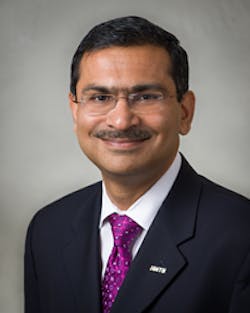WEB EXCLUSIVE: How to defeat the traffic congestion scourge
Frustrating doesn’t begin to describe the impact of congestion. A 2016 study by the research firm INRIX identified the U.S. as the most congested developed country in the world—where drivers spend an average of 42 hours a year in traffic during peak hours. That report calculates the total nationwide costs of congestion—including fuel, time wasted and freight costs passed on through higher prices—as $300 billion, an average of $1,400 per driver.
The new administration has correctly prioritized the need for more transportation funding to rebuild the nation’s infrastructure, a need emphasized by the D+ grade by the American Society of Civil Engineers’ 2017 Infrastructure Report Card. That priority also was apparent from statewide referenda last November, when voters in 34 states agreed to fund local transportation projects. Increased funding and user fees such as tolls or private investment will be the key to deploying proven solutions that dismantle congestion bottlenecks and increase traffic flow across the U.S., giving the economy a needed boost.
Among the solutions that should play a role in targeting congested highways are:
Increase capacity of existing roads and highways: Increasing capacity is the most direct way to safely get more vehicles through major roadways to their destinations. New Jersey, for example, recently widened the New Jersey Turnpike at its most congested point, increasing vehicle throughput. New York State is replacing the critically important Tappan Zee Bridge across the Hudson River and providing much greater capacity than the deteriorated existing bridge. In 2012, the American Transportation Research Institute ranked the Chicago Circle Interchange as the nation’s number one bottleneck for trucks. Because of that ranking, Illinois began work on the Interchange’s reconstruction at a cost of $500 million, with completion expected by 2019.
Leverage advanced tolling systems to increase traffic flow: Congestion pricing, through delivery systems such as priced managed lanes, is a viable solution to the traffic problems plaguing many of America’s biggest cities. Managed lanes use tolls to enable drivers to take a specific lane with reduced traffic flow. In some cases, tolls are adjusted based on demand. On San Diego’s I-15, for example, HNTB developed the world’s first fully dynamic variable pricing system using an algorithm that updates the price at various entry points every three to six minutes based on travel levels. All-electronic tolling is another congestion buster, eliminating the need for vehicles to stop at a tollbooth.
Deploy intelligent transportation systems (ITS): New mobility solutions such as active traffic management, which includes the use of highway shoulders during peak traffic periods and lane controls to harmonize traffic speeds, reducing traffic turbulence and resulting stops and starts, is an example. Integrated corridor management, an “all roads, all modes” approach, optimizes the entire transportation system. If excess capacity is detected on an alternate route or on a different mode of transportation, integrated corridor management will route people or goods accordingly. This technique often uses digital signs to alert highway drivers to upcoming congestion due to accidents, construction or bad weather and provide optional routes to avoid the bottlenecks.
Build more public transit: States and municipalities reviewing their options for increasing mobility see advantages in building new light-rail, bus, subway and streetcar systems to supplement existing transit systems, and enticing car drivers to switch to public transit. Additionally, some pioneering communities are connecting their residents to public transit by partnering with ridesharing services like Uber and Lyft to overcome the “first/last-mile” challenge from homes to transit stations.
Traffic congestion and its negative impact on lives and the economy can be reduced through these solutions, each of which will require increased funding to be successful. The good news is that everyone, from the White House to the State House to Main Street is discussing the need to fund rebuilding our infrastructure.
-----------------
Prasad is senior vice president and leader of HNTB Corporation’s national transportation practice. He was the secretary of transportation for the state of Florida from 2011 to 2015. He can be reached at [email protected].
